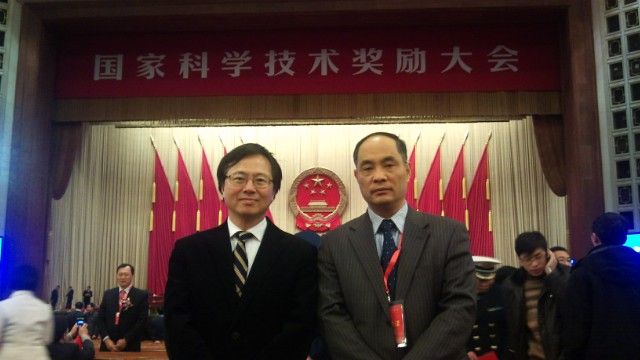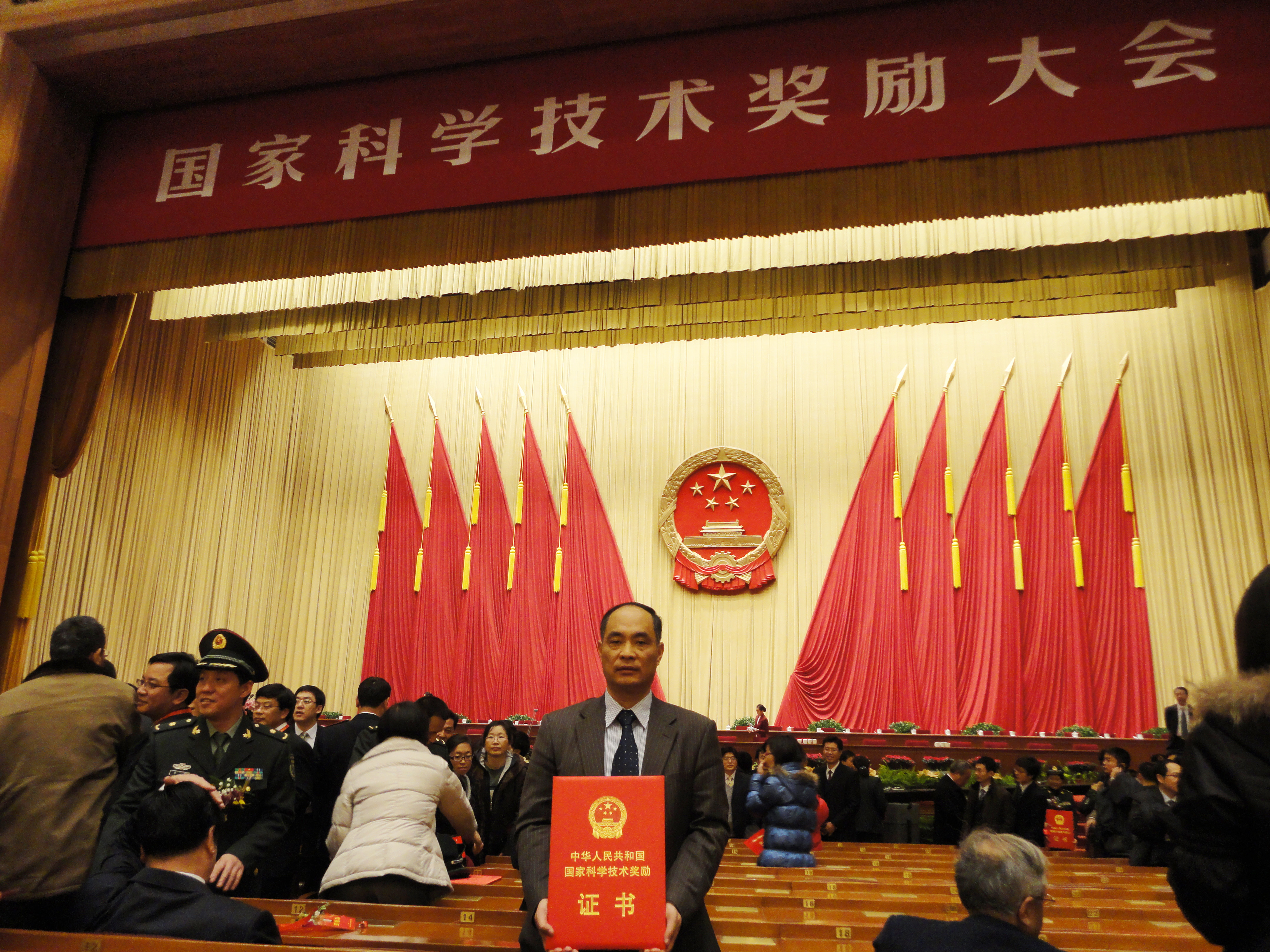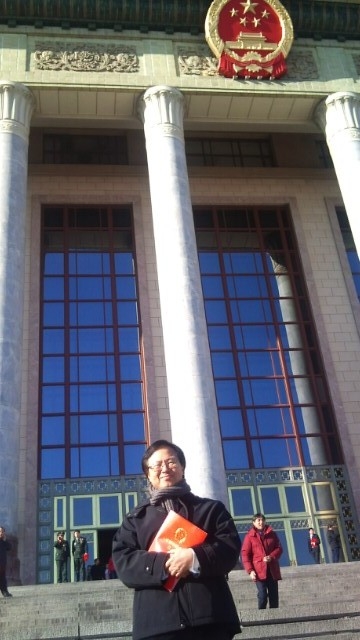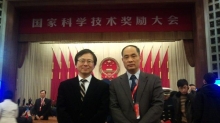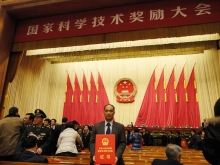CUHK
News Centre
Two CUHK Research Projects Conferred State Science and Technology Awards
The National Office for Science and Technology Awards announced today (14 January) the winning projects of the 2010 State Science and Technology Awards (SSTAs), and two of them are CUHK projects. ‘Nonlinear output regulation problem and the internal model principle’ led by Prof. Huang Jie, Department of Mechanical and Automation Engineering received the State Natural Science Award (SNSA) second-class award. Another project ‘Technology for the early diagnosis and prevention of secondary brain injury in the management of traumatic brain injury’ by the Faculty of Medicine was honoured with the State Scientific and Technological Progress Award (SSTPA) second-class award. The presentation ceremony was held today in Beijing.
Nonlinear Output Regulation Problem and the Internal Model Principle
In 2010, 127 competed for SNSA, China’s most prestigious award in the field of natural science which aims to recognize academic excellence in basic scientific research. Among the contenders, three had been recommended by the Hong Kong Special Administration Region (HKSAR) Government. After a stringent selection process, a total of 30 research projects received the second-class award, including Professor Huang’s project, which is the only winning project in the field of control and automation, and the only winning project recommended by the HKSAR Government.
An expert in nonlinear control, Professor Huang is widely acknowledged as one of the pioneers of nonlinear output regulation. The output regulation problem arises from formulating many practical control problems, and has been a focus of research in the nonlinear control community for over two decades.
Other researchers participating in the winning project ‘Nonlinear output regulation problem and the internal model principle’ are Dr. Chen Zhi-yong, senior lecturer at the University of Newcastle in Australia; Dr. Zhang Ji-feng, researcher at the Academy of Mathematics and Systems Science, Chinese Academy of Sciences; and Prof. Ye Xudong, College of Electrical Engineering, Zhejiang University. Dr. Chen Zhi-yong is a CUHK alumnus and a former MPhil and PhD student of Professor Huang.
There are three core problems in nonlinear control: stability analysis, stabilization, and output regulation. The output regulation problem aims to achieve asymptotic tracking and disturbance rejection in an uncertain nonlinear system. Its applications include the landing of aircrafts under severe weather condition, high-speed disk driver control system design, as well as vibration suppression of high-speed trains. Major research discoveries of this project include:
• The solvability conditions of regulator equations for general nonlinear systems are established along with a systematic algorithm, which can be used as practical design methods for complex nonlinear control problems, such as the manipulation of robot arms, high-performance mechatronical systems, and other bench mark control problems;
• The nonlinear version of the internal model principle for nonlinear robust output regulation problem is established, laying a solid foundation for future research on nonlinear robust output regulation problems;
• Established a general framework for handling global robust output regulation problems, which bridges the gap between the two core nonlinear control problems, i.e. stabilization and output regulation. This achievement has not only significantly simplified a difficult problem of over 10 years, but has also created new research opportunities for new stabilization problems;
• Established a generalized centre manifold theorem for singular nonlinear systems which paves the way for further solving the output regulation problem for singular nonlinear systems; and
• Incorporated adaptive control techniques into the framework for robust output regulation problem, which leads to the application of the attitude control of spacecraft.
Technology for the Early Diagnosis and Prevention of Secondary Brain Injury in the Management of Traumatic Brain Injury
SSTPA is conferred on scientists who have made outstanding contributions in the implementation of technological development and public welfare projects. A total of 701 entries competed for SSTPA in 2010. Jointly conducted by the Fourth Military Medical University of Xi’an and CUHK, the 17-year project ‘Technology for the early diagnosis and prevention of secondary brain injury in the management of traumatic brain injury’ is related to neurosurgery, trauma and emergency medicine. The CUHK researchers who took part are Prof. Poon Wai-sang, Prof. George Wong Kwok-chu and Dr. Stephanie Ng Chi-ping of the Division of Neurosurgery, and Prof. Ng Ho-keung, Chairman of the Department of Anatomical and Cellular Pathology.
Secondary brain insult is the primary cause of high disability and mortality rates of severe traumatic brain injury. The main barriers to curing severe traumatic brain injury are lack of validated animal models, mechanism, assessment methods and effective therapy. Thus, methods for overcoming these barriers can largely enhance the therapeutic outcome of severe traumatic brain injury. Sponsored by national and provincial funding, the project is a systematic research on traumatic brain injury animal models, mechanism of secondary brain insults, and relevant assessment and therapies. The research findings are as follows:
• The establishment of two experimental head injury models that can mimic human brain injury as useful tools for understanding the mechanism of secondary brain insults after traumatic brain injury;
• The discovery of reasons explaining why secondary brain injury and brain oedema will aggravate secondary brain insult after severe injuries. A new perspective that ‘secondary brain injury must be taken into account for the assessment and treatment of traumatic brain injury’ is proposed;
• New evaluation criteria and system of secondary brain damage after traumatic brain injury are developed, which greatly improve the drawbacks of traditional assessment methods, such as objectivity difference and the ignorance of secondary brain damage; and
• A fast and comprehensive treatment system integrating emergency medical treatment (first aid, transportation and tele-consultation), surgical and non-surgical treatment is established. The management mortality decreased from 30% to 19.7%, benefitting 5,298 brain injury casualty cases.
As a comprehensive research-led university, the Chinese University excels in a spectrum of academic disciplines. To date, a total of 13 CUHK professors were awarded the SNSA, and 10 were honoured with the SSTPA.
Prof. Poon Wai-sang (left) and Prof. Huang Jie at the annual national science-technology award ceremony at the Great Hall of the People in Beijing


